Eggs have been a staple part of breakfast for many years. Whether you prefer scrambled, sunny side up, or over easy, they always make a great addition to your breakfast plate. However, eggs are prevalent in more than just breakfast dishes. One way that many people use them in dinners or appetizers is by hard boiling them. While hard boiling an egg seems simple, there is a certain process and a certain magic to get your egg to turn out just right. This article will discuss how to make the perfect hard-boiled egg. We will cover all the basics: how to cook and use it in your kitchen, and even provide a free time chart to show you how long to cook for your desired consistency. Let’s dive into learning about the perfect hard-boiled egg!
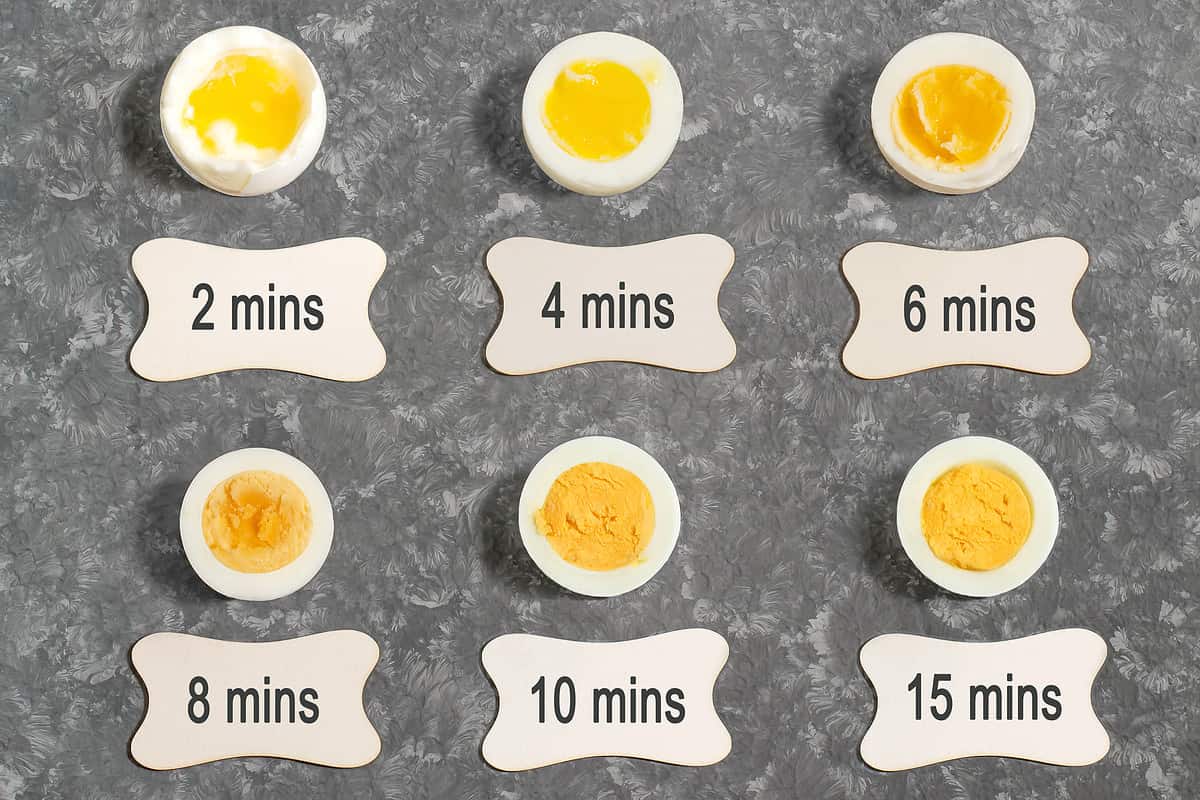
©iStock.com/13 Smile
What Is a Hard-Boiled Egg?
Before learning how to cook the perfect hard-boiled egg, we should first agree on what a hard-boiled egg is. According to the Collins Dictionary, a hard-boiled egg is an egg that “has been boiled in its shell until the whole of the inside is solid.”
This means that the entirety of the egg should have a solid consistency; there should be no runny parts in your hard-boiled egg. Additionally, with a hard-boiled egg, the egg remains whole. This differs from breakfast methods such as scrambled. After it is cooked, certain egg preparations may require cutting it, but your egg should be whole and solid throughout the cooking process.
How to Cook a Hard-Boiled Egg
Now that you know what a hard-boiled egg is, let’s discuss how to cook it. The good news? Hard-boiled eggs are relatively simple to make. To properly prepare your hard-boiled eggs, you will only need four things:
- A pot
- A lid for your pot
- Your eggs
- Water
First, place your desired amount of eggs into your pot and cover them with cold water. Your water should be about an inch higher than your eggs. Next, set your burner to high heat and allow your water to come to a boil. Once your water is boiling rapidly, remove your eggs from the heat and allow them to sit in the hot water.
As you can see from our time chart above, the amount of time you allow your eggs to sit determines their consistency. A good time metric for hard-boiled eggs is between 10 and 15 minutes; 15 minutes will give you the most solid consistency to your egg, but 10 minutes will also provide a decent hard-boiled egg. Factors that can affect this timing are the size of the egg and the cooker’s personal preference. The larger the egg, the more time it should stand. So, if your egg is large, let it stand for 15 minutes; if it is smaller, let it stand for 10-12 minutes.
After letting your eggs sit for the desired time, you will want to drain them and run cold water over them until they are cooled. Covering your eggs in cold water is a sort of shock to them that stops the cooking process and causes the egg whites to contract. This will also help make them easier to peel.
The Peeling Process
While running the cold water over the egg helps make the peeling process easier, there are some other tips and tricks for making peeling an egg easier. One trick is to use the eggs that have been in the refrigerator longer; being less fresh makes it easier to peel.
Additionally, gently roll the egg between your hands after you tap it on a hard surface and create a break in the shell. This helps to loosen the shell from the egg and can dislodge larger pieces of the shell, making it easier for you to grab and pull off in bigger pieces.
Hard-Boiled Eggs in the Kitchen
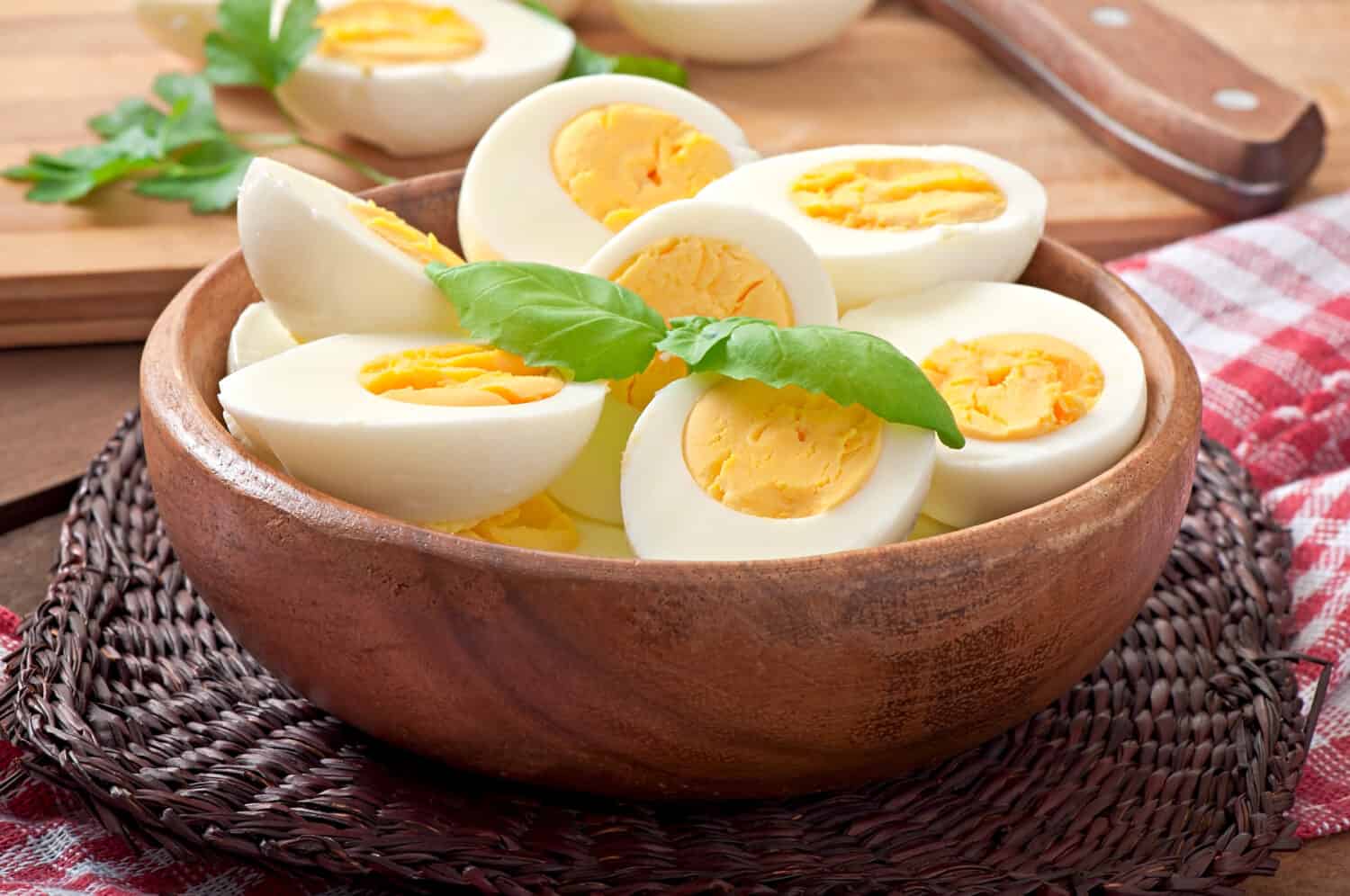
©Timolina/Shutterstock.com
Once you have successfully cooked the perfect hard-boiled egg, it is time to jazz it up! While you can serve your hard-boiled egg independently, many herbs and other accompaniments make your egg even better. Some great toppers for your hard-boiled eggs are:
| Topping | Description |
|---|---|
| Fresh Herbs | Dill or chives are the most popular choice, but you can choose any green herb, such as parsley or basil, to help bring color, flavor, and freshness to your eggs. |
| Olive Oil | Drizzling some olive oil and adding your seasoning of choice is a simple but effective way to enhance the flavor of your egg. While plain olive oil with salt and pepper is a common choice, you can be calm or adventurous with these toppings. A more adventurous choice could be a flavored oil, such as a Tuscan herb olive oil, with a more spicy topping, such as tajin. |
| Simple Seasoning | If you want to keep your eggs simple, you can garnish them with easy spices. Salt and pepper are the most common choice to add, but you can choose any spice from your pantry. Other great choices are everything bagel seasoning or small amounts of paprika. |
| Relish | Adding a scoop of relish or even some sliced whole pickles on top of your hard-boiled egg can be another delicious option. While most people tend to favor dill relish or pickles, the choice is entirely up to you. |
| Bacon Bits | Everything is better with bacon, including the perfect hard-boiled egg. Chop up some bacon and sprinkle the bits on top of your egg for a delicious addition. |
Recipes
While there are countless ways to use a hard-boiled egg in the kitchen, here are five simple recipes that showcase the versatility of this food item and how it can be used in your kitchen.
Deviled Eggs
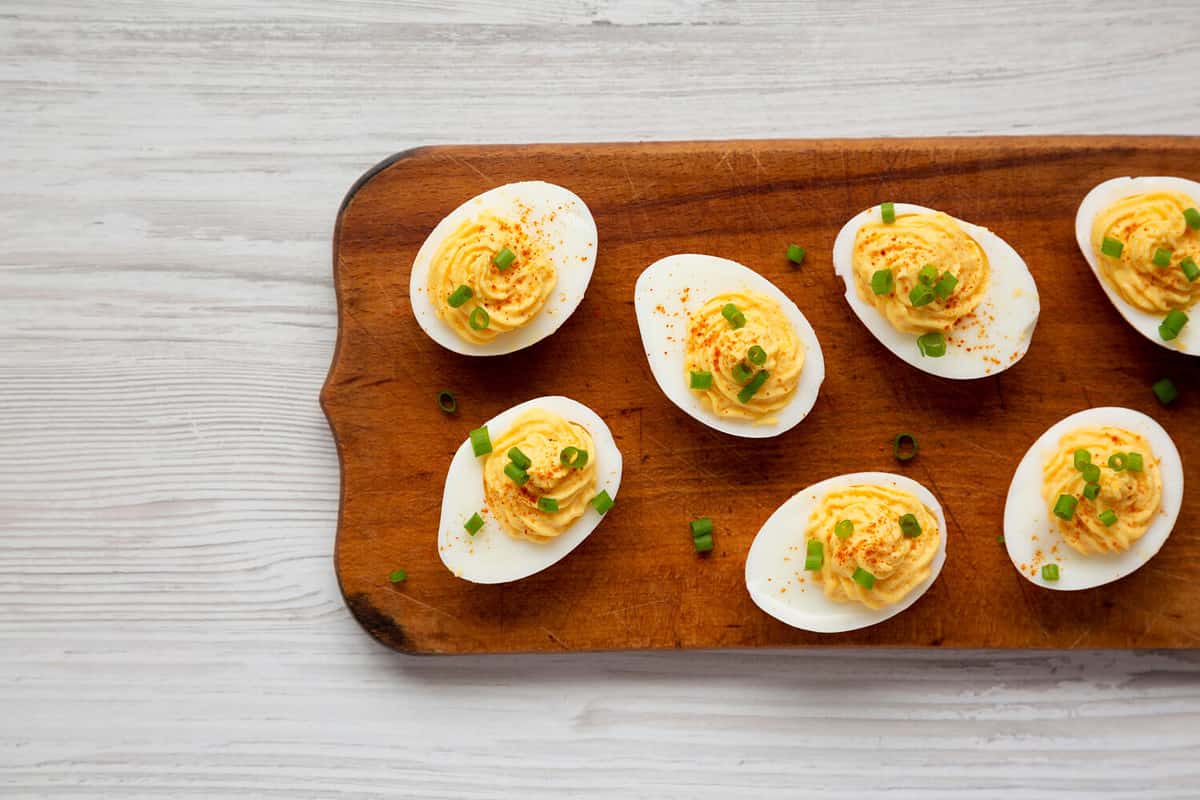
©Liudmyla Chuhunova/Shutterstock.com
A very common and simple recipe that is often made with hard-boiled eggs is deviled eggs. Great as appetizers or as any party dish, deviled eggs are loved by many. Simply cook your hard-boiled eggs and peel them. Next, remove the yolk from the eggs and place them in a bowl with mayonnaise, mustard, lemon juice, and salt. Whisk all those ingredients together and place the mixture into a pastry bag. Pipe the mixture into the egg whites. Then add seasoning and garnish of your choice. A common choice is chives, parsley, or dill, with salt and a little paprika.
Cobb Salad
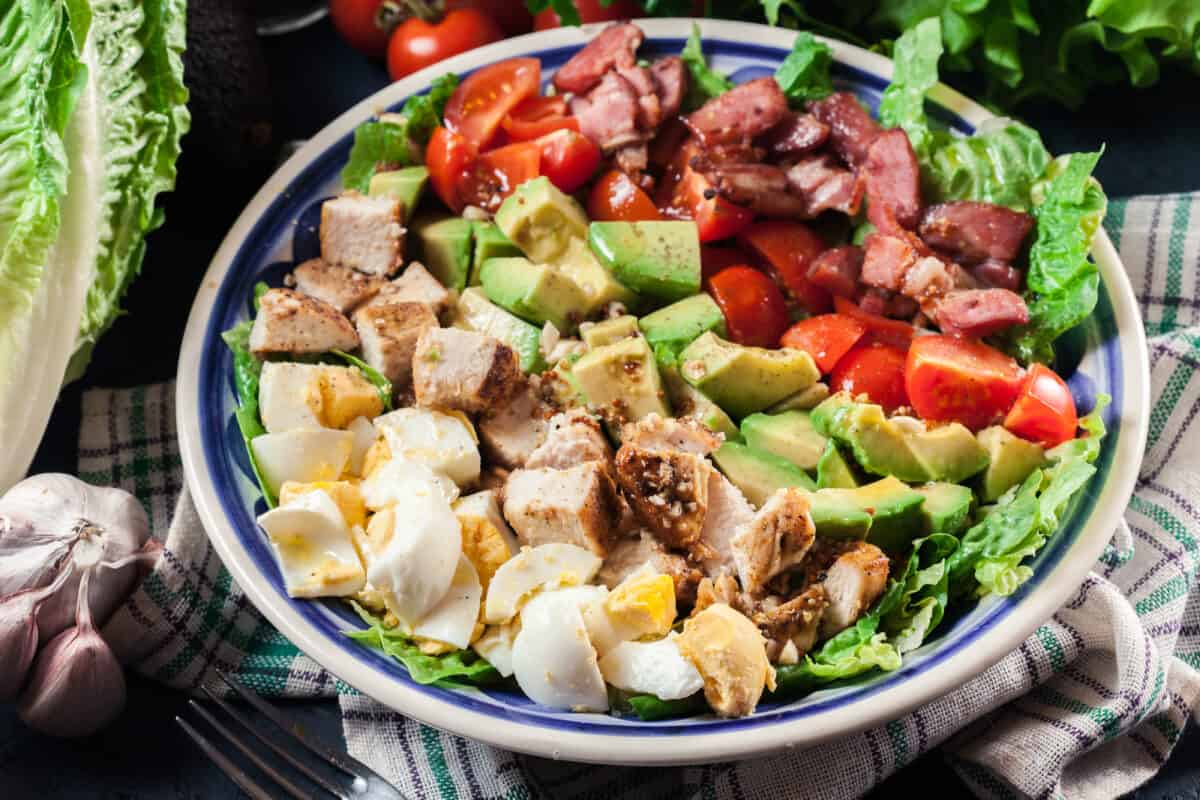
©Slawomir Fajer/Shutterstock.com
Another well-known recipe is the Cobb salad. To make this salad, create a base of chopped salad greens. The typical choice is romaine lettuce, but you may choose whatever salad greens you enjoy. Top your base with chopped tomatoes, bacon, chicken breast, avocado, blue cheese, chives, and our beloved hard-boiled eggs. Sprinkle on some salt and pepper, and dress with a red wine vinaigrette.
Avocado Toast
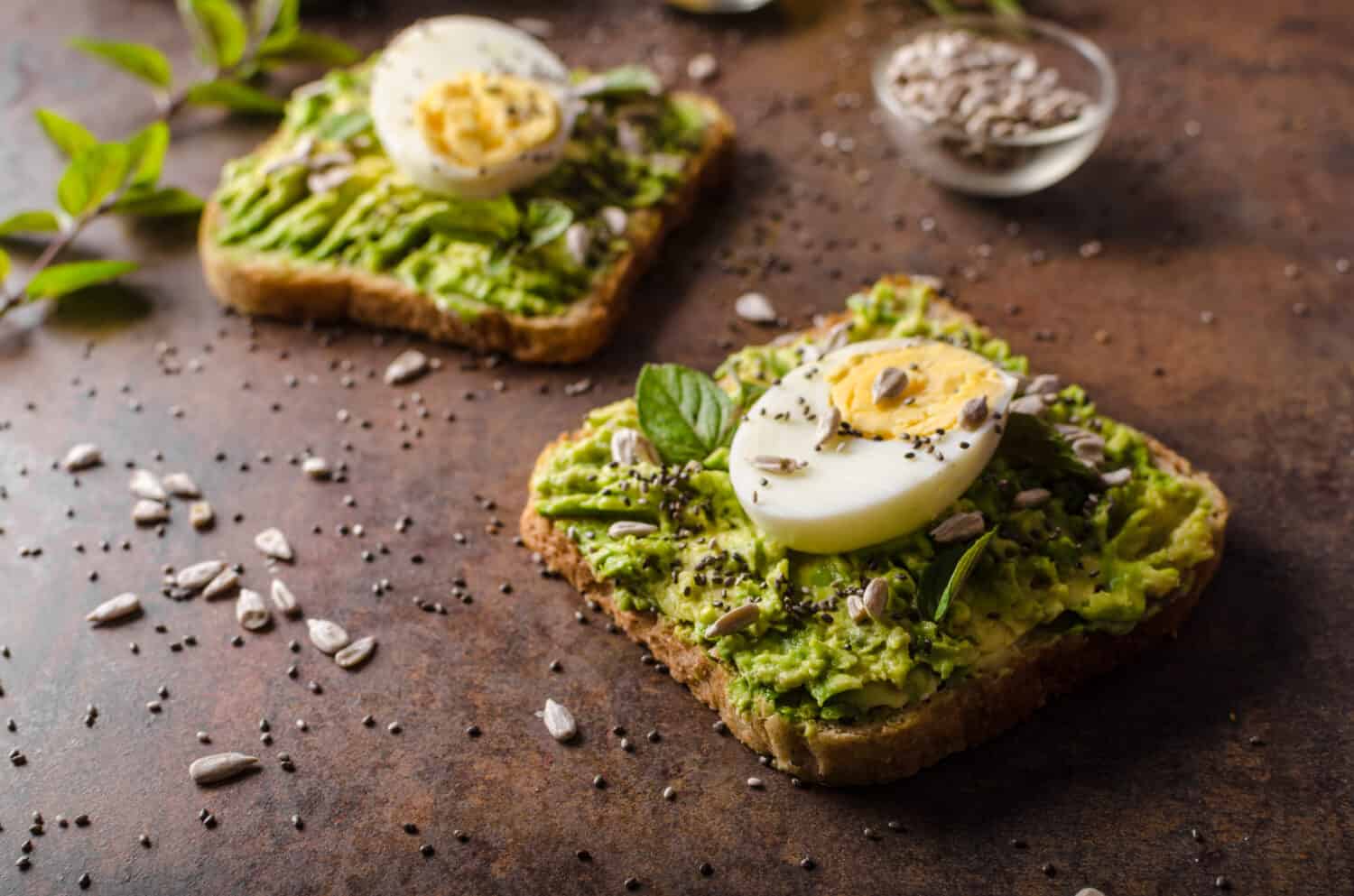
©Stepanek Photography/Shutterstock.com
This meal has grown in popularity lately, and it is easy to see why. Besides being visually appealing, it also tastes great and offers various nutritious benefits. It is a great source of fiber and provides multiple vitamins, minerals, and antioxidants. To create this dish, simply combine avocado, lemon juice, salt, and pepper into a bowl. Gently mash it and spread it over a toasted piece of your chosen bread. Garnish with seeds, a sliced hard-boiled egg, and any additional seasoning you choose.
Sautéed Asparagus and Mushrooms with Dressing
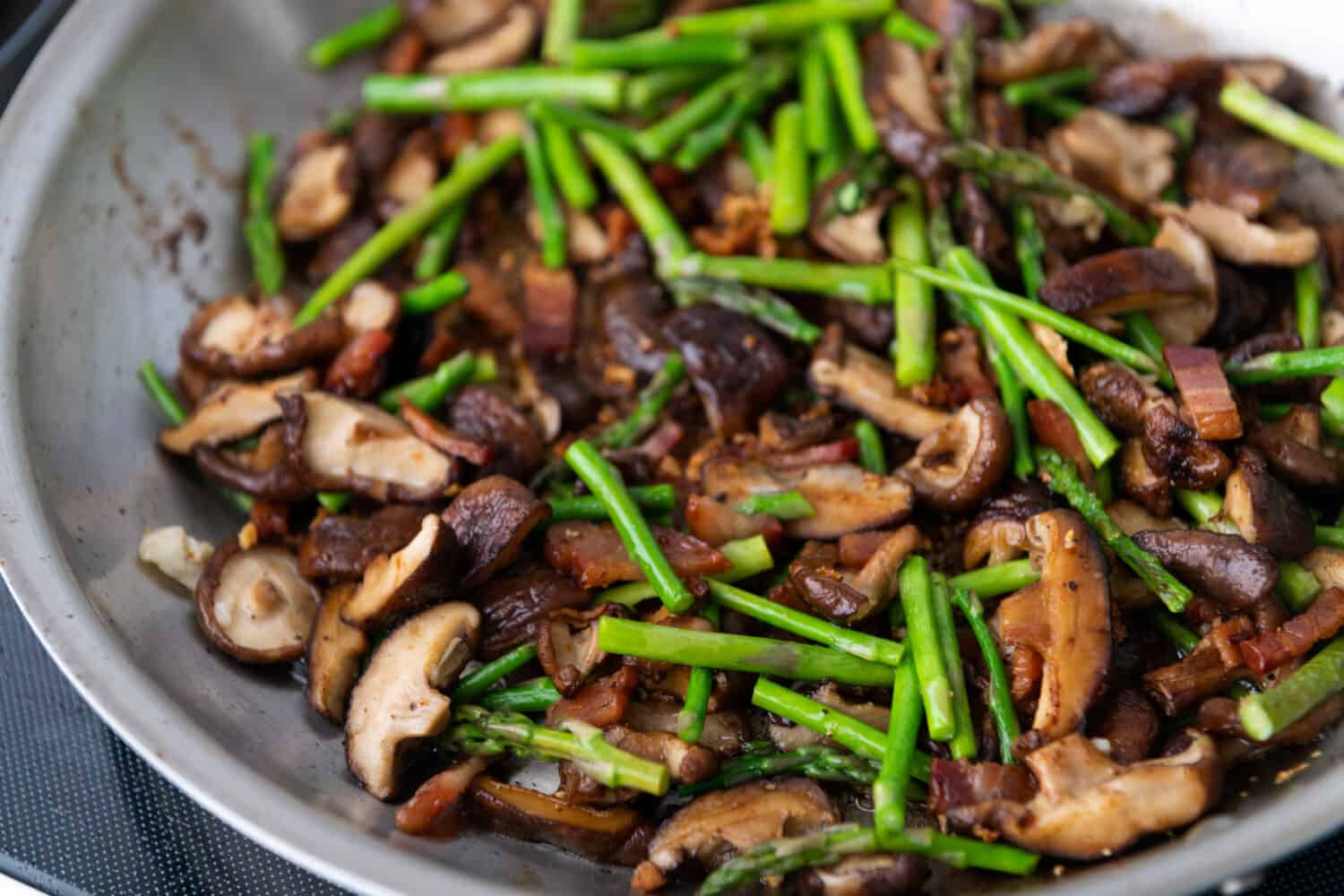
©Anna Hoychuk/Shutterstock.com
A hearty side dish, sautéed asparagus, and mushrooms is a delicious addition to any family dinner. Simply heat up olive oil on the stove and add in minced garlic. Saute until the garlic is fragrant, and add your asparagus and mushrooms of choice. Stir frequently and add salt, pepper, and any seasoning you choose. If you want it to have more flavor, you can add a sauce as well, such as soy sauce. Once you remove it from the stove, you can garnish it with your hard-boiled eggs for color and texture.
Egg Salad
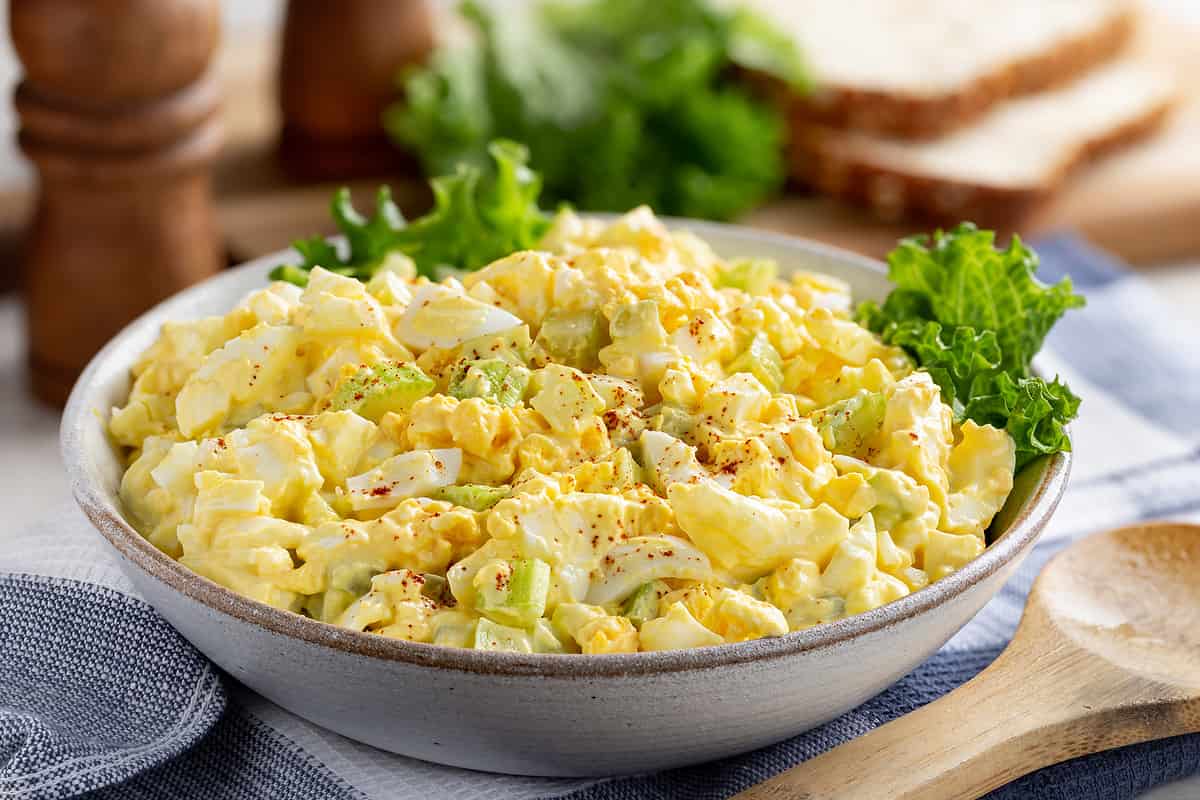
©iStock.com/chas53
To make a delicious egg salad, you want to remove the yolks from your hard-boiled eggs. You want to mash the yolks in a bowl with mayonnaise, mustard, salt, and pepper. Then chop the egg whites and add them into the bowl along with green onion, celery, and chopped dill. Season with paprika and other seasonings of your choice. You can have this egg salad on its own, or you can put it on top of salads or sandwiches.
Hard-Boiled Egg Shelf Life and How to Store Them
After taking the time to boil your eggs, you want to ensure that you store them properly so that all of that effort does not go to waste. According to the book Poultry Science, multiple home storage conditions were tested for the keeping of hard-boiled eggs. Leaving your eggs out at room temperature will quickly promote bacteria growth, and your eggs will keep for less than a week.
If you keep your eggs in the refrigerator, they will keep for up to a week. Their storage life increases if you store them in their shells. According to the study discussed in the book, “peeling the eggs decreased storage stability at 4 C by almost 40% compared with eggs stored in the shell.” So, if you want your perfect hard-boiled eggs to have the longest life possible, store them in a sealed container, unpeeled, in the refrigerator.
What to Do With Left Over Hard-Boiled Eggs
If you made slightly too many eggs for your recipe, do not fret. There are plenty of uses for those leftover hard-boiled eggs. You could store them in the fridge as a snack on their own. However, if you want to incorporate them into a dish, throwing them on top of a salad or into a sandwich also works. The sautéed vegetable recipe from above is another great option for any loose or leftover hard-boiled eggs in your fridge. This food is really versatile, so it can be easily incorporated into many different dishes.
Egg Health Benefits
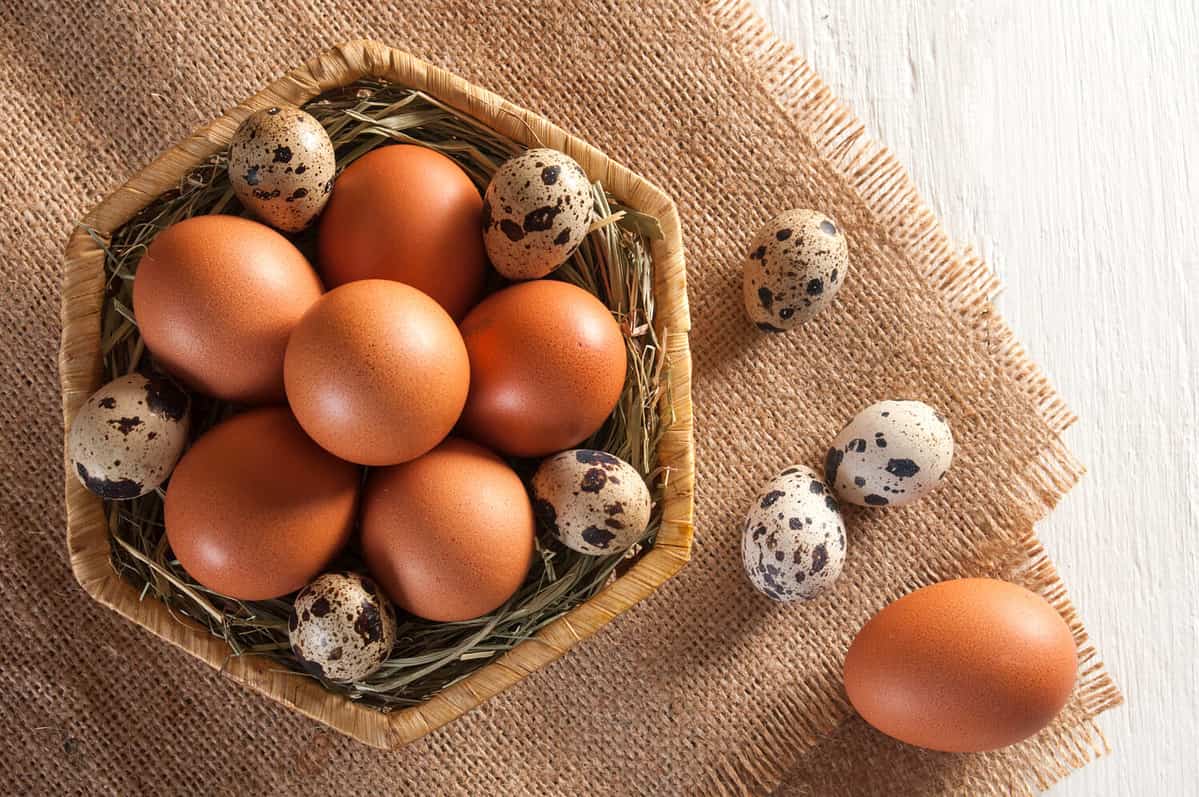
©Aleshin_Aleksei/Shutterstock.com
While there has been some debate over the role or benefits of eggs over the years, many experts still agree on the benefits of eating this popular breakfast food. One benefit that eggs provide is that they pack a lot of protein. Protein is important for a healthy body because it builds muscles, a strong immune system, hair, and nails.
Also, eggs have various vitamins and minerals important to overall health. Some of those include vitamin D, folate, vitamin B12, zinc, and selenium. Research suggests that those who eat eggs have higher levels of nutrients than those who do not and surprisingly lower cholesterol levels.
While hard-boiling the eggs may lessen some of the nutrients, other nutrients are more digestible. According to Healthline, a study found “that the human body could use 91% of the protein in cooked eggs, compared to only 51% in raw eggs.”
Recipe Card
Print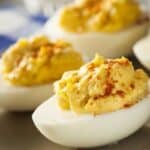
Simple Deviled Eggs
Ingredients
- 6 eggs
- Dash of salt
- Dash of pepper
- 1/4 teaspoon mustard
- 1 1/2 to 2 1/2 Tablespoons mayonnaise
- Paprika
Instructions
- Boil eggs. Cool for 10 minutes and remove shells. Cut into halves lengthwise and remove yolk, place yolk into a small bowl.
- Cream yolk, salt, pepper, mustard, and mayonnaise.
- Put 1/2 teaspoonful into egg whites and garnish with paprika.
The image featured at the top of this post is ©Timolina/Shutterstock.com.
